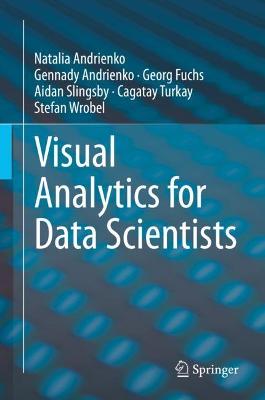This textbook presents the main principles of visual analytics and describes techniques and approaches that have proven their utility and can be readily reproduced. Special emphasis is placed on various instructive examples of analyses, in which the need for and the use of visualisations are explained in detail.
The book begins by introducing the main ideas and concepts of visual analytics and explaining why it should be considered an essential part of data science methodology and practices. It then describes the general principles underlying the visual analytics approaches, including those on appropriate visual representation, the use of interactive techniques, and classes of computational methods. It continues with discussing how to use visualisations for getting aware of data properties that need to be taken into account and for detecting possible data quality issues that may impair the analysis. The second part of the book describes visual analytics methods and workflows, organised by various data types including multidimensional data, data with spatial and temporal components, data describing binary relationships, texts, images and video. For each data type, the specific properties and issues are explained, the relevant analysis tasks are discussed, and appropriate methods and procedures are introduced. The focus here is not on the micro-level details of how the methods work, but on how the methods can be used and how they can be applied to data. The limitations of the methods are also discussed and possible pitfalls are identified.
The textbook is intended for students in data science and, more generally, anyone doing or planning to do practical data analysis. It includes numerous examples demonstrating how visual analytics techniques are used and how they can help analysts to understand the properties of data, gain insights into the subject reflected in the data, and build good models that can be trusted. Based on several years of teaching related courses at the City, University of London, the University of Bonn and TU Munich, as well as industry training at the Fraunhofer Institute IAIS and numerous summer schools, the main content is complemented by sample datasets and detailed, illustrated descriptions of exercises to practice applying visual analytics methods and workflows.
- ISBN13 9783030561451
- Publish Date 31 August 2020
- Publish Status Active
- Publish Country CH
- Imprint Springer Nature Switzerland AG
- Edition 1st ed. 2020
- Format Hardcover
- Pages 440
- Language English
